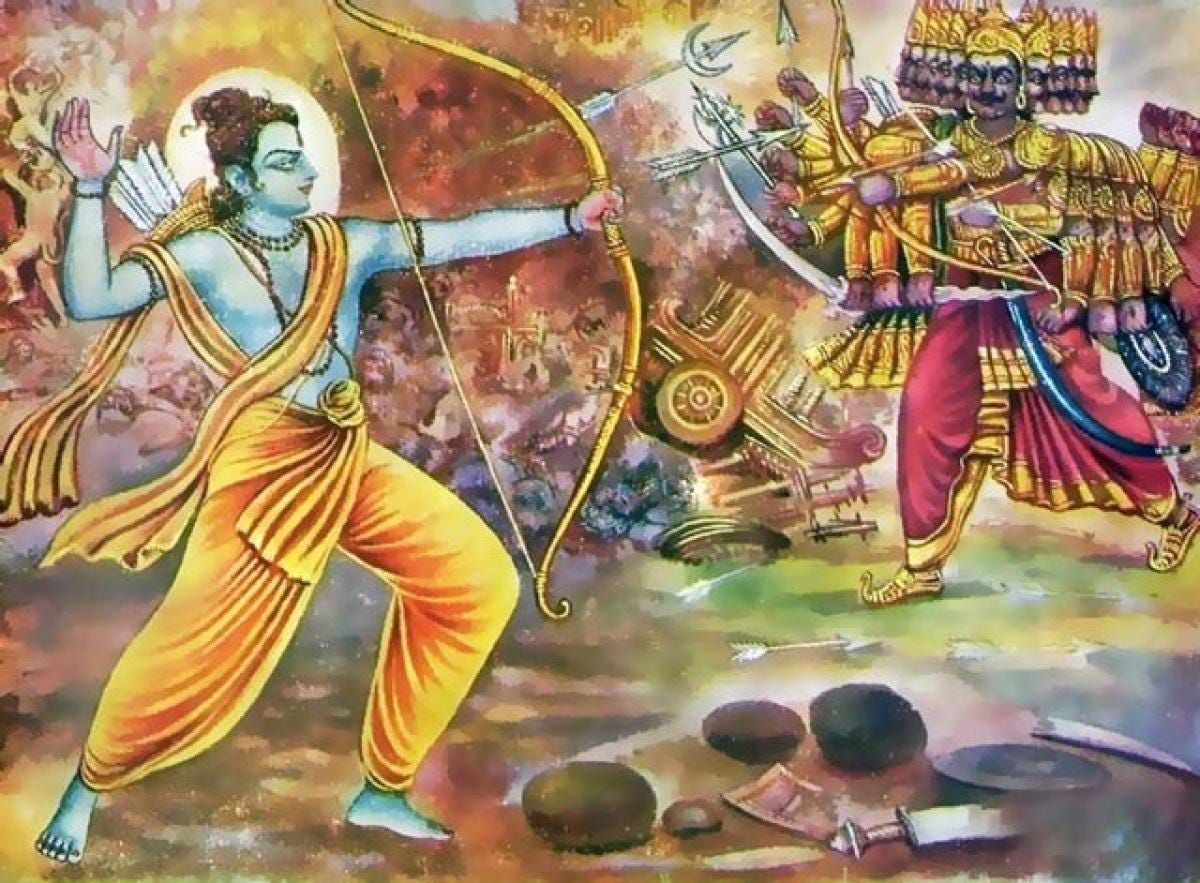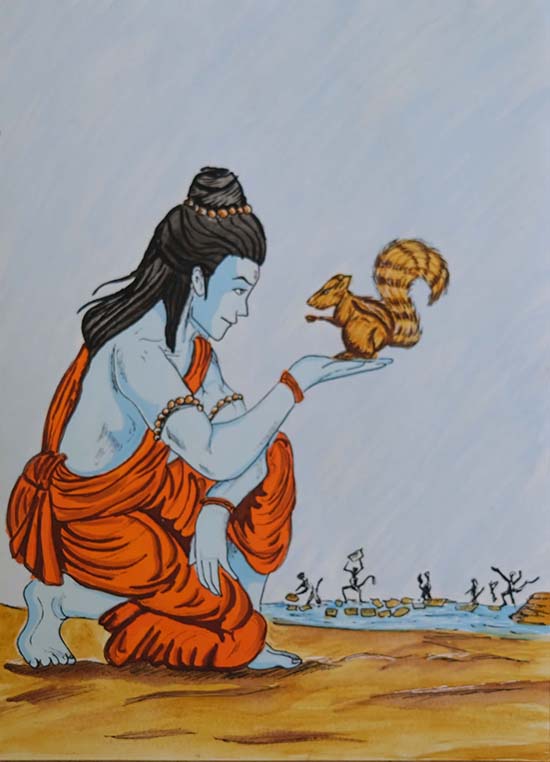The story of Rama is one of the most revered and well-known tales in Indian culture, primarily told in the ancient Sanskrit epic Ramayana, composed by the sage Valmiki. Here’s a concise summary of the story:
The Birth and Early Life of Rama
Rama was born in the city of Ayodhya, the eldest son of King Dasharatha and Queen Kaushalya. He was an incarnation of the god Vishnu, born to defeat the demon king Ravana. Rama grew up with his brothers Lakshmana, Bharata, and Shatrughna.
He was virtuous, brave, and wise. At a young age, he won the hand of Sita, the princess of Mithila, by stringing and breaking the great bow of Lord Shiva in a swayamvara (a bride-choosing ceremony).
Exile to the Forest
Just before Rama was to be crowned king, his stepmother Kaikeyi, driven by jealousy and ambition for her son Bharata, demanded that Rama be exiled for 14 years and Bharata be made king. King Dasharatha, bound by his promises, sorrowfully agreed.
Rama accepted his fate with calm dignity. Sita, his devoted wife, and Lakshmana, his loyal brother, insisted on going with him to the forest.

The Abduction of Sita
While in exile, the demoness Shurpanakha (Ravana’s sister) tried to seduce Rama and attack Sita. Lakshmana wounded her, leading her to seek revenge. She went to her brother Ravana, the powerful ten-headed demon king of Lanka.
Ravana, enraged and intrigued by Sita’s beauty, tricked Rama and Lakshmana and abducted Sita, taking her to his island kingdom of Lanka.
Search for Sita and the Alliance with Hanuman
Rama and Lakshmana began a desperate search for Sita. They formed an alliance with Sugriva, the king of the monkeys, and met Hanuman, his general—an ardent devotee of Rama.
Hanuman leapt across the ocean to Lanka, found Sita in captivity, gave her Rama’s ring, and set fire to Lanka before returning.
The Battle of Lanka
With the help of the Vanara (monkey) army and constructing a bridge (Rama Setu) to Lanka, Rama waged a great war against Ravana. After a fierce battle, Rama killed Ravana, liberating Sita.

The Battle of Lanka
With the help of the Vanara (monkey) army and constructing a bridge (Rama Setu) to Lanka, Rama waged a great war against Ravana. After a fierce battle, Rama killed Ravana, liberating Sita.
Return to Ayodhya
After completing his 14 years of exile, Rama returned to Ayodhya with Sita and Lakshmana. The people of Ayodhya welcomed him joyfully, and Rama was crowned king in a grand ceremony, beginning his righteous rule, known as Rama Rajya—an era of justice, prosperity, and peace.
Later Life (Uttara Kanda – sometimes considered an addition)
In some versions, doubts about Sita’s chastity during her captivity led Rama to banish her, even though she had proven her purity through a trial by fire (Agni Pariksha). She took refuge in the forest and gave birth to twins, Lava and Kusha, who later reunited with Rama.
Eventually, Rama returned to his divine form and ascended to Vaikuntha, the abode of Vishnu.
Themes and Legacy
- Dharma (duty/righteousness)
- Devotion, sacrifice, and loyalty
- Victory of good over evil
The Ramayana has inspired countless versions across India and Southeast Asia, in languages, art, drama, and dance. Rama remains a symbol of the ideal man, king, and husband.
